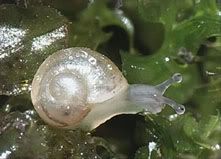Tuesday, April 18, 2006
Wednesday, April 05, 2006
someone is a genius

For the moment, if you go to google and type the word "failure" as the search phrase, and click "I'm feeling lucky" (to bring up the first search hit result), you get redirected the White House web page for George W. Bush.
Posted by
Jim
at
10:52 PM
1 comments
![]()
Monday, April 03, 2006
genetically engineering myth creatures for fantasy pets

GeneDupe is a company in the business of genetically engineered luxury pets. They start out with a search image of a mythological creature (right now, dragons, unicorns and gryphons), and the living creature that most closely resembles the mythological creature (lizards for dragons, horses for unicorns, and the spliced genomes of a lion and an eagle for the gryphon). From there, by using computer simulations, the computer goes through a series of random mutations, breeding simulated embryos and selecting for the new mutation that most closely resembles the virtual creature. They have successfully designed, in theory, the genetics of multiple imaginary creatures from popular mythology. The next step for the company, which they are just beginning, is to take it into the real world for testing.
Combining the genetic traits from two different animals into a third is nothing new. Everyone has heard of the rabbit Alba (see wire article "I Love My Glow Bunny"), which had jellyfish genes spliced in to make its eyes, whiskers and fur glow green under fluorescent light. Scientists have also tinkered with designing human-animal chimeras, combining the DNA of humans with animal dna, and allowing the cells to survive for a few days in a petri dish before destroying it (see my previous article, mad geneticists create human monsters; chimeras a reality).
idea via future feeder
source article, "Here be dragons" at Economist.com
Posted by
Jim
at
3:01 AM
1 comments
![]()
new brain chip can connect to thousands of neurons, send signals back to hundreds

One small step towards mind control and cyborgs.
The mobile chip maker Infineon, working with a team from Italy and Germany, has developed a chip that can read signals from up to 16,328 mammalian brain cells, and send signals back to several hundred of them. The scientists tested the chip on snails, due to the simplicity of the cells, and tinkered with the genetics of the organisms to get the combination to work even better. In order to get neurons to attach to the circuit, the researchers had to develop a "neural glue" using a protein from the brain which glues connections together and also attracts sodium pores.
source article at new scientist
Posted by
Jim
at
2:40 AM
0
comments
![]()


